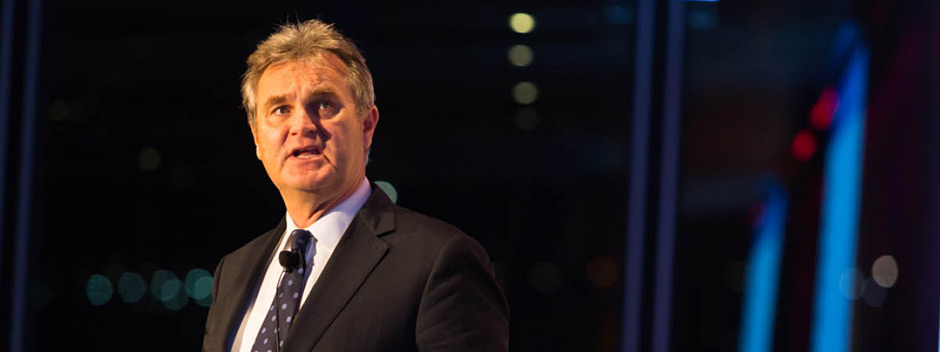Here are five ways Australia’s workforce is changing and needs to change, according to Salt:
1. Australia must develop a culture of innovation
Salt points out that some of the largest companies on earth originated in the United States – including Apple, Google, Microsoft, Facebook and Johnson & Johnson. What’s even more impressive is that some of these businesses, such as Facebook, didn’t even exist just over a decade ago – indicating miraculous growth in such a short period of time.
In comparison, Australia’s leading companies – the likes of Telstra, Woolworths and BHP – have been around since 1901, 1924 and 1885 respectively.
“We talk about innovation and innovative cultures and certainly SEEK is a great example of that. But when you look at the biggest businesses on the Australian continent compared with America, we’ve got a long way to go in order to truly embrace the level of innovation that we see coming out of America,” says Salt.
It’s time, he adds, for Australia to start walking the talk.
2. Embracing the YOLO spirit
Salt says only Generation Y could come up with YOLO – You Only Live Once. Since entering the workforce 10 years ago, Gen Y has brought with them an entrepreneurial spirit and a willingness to take risks.
“It’s our job to harvest that spirit. That technology, that social need, put it together and it’s very entrepreneurial. How can we harvest that natural entrepreneurial energy and innovative culture in our organisations?”
While Salt believes this will be a challenge for businesses and recruiters alike, there’s a huge opportunity for Gen X and Baby Boomers to leverage Gen Y’s positive outlook for future business growth.
“This is an extraordinary era of economic prosperity in Australia, and for the moment, the projection is that it will continue in a country of assured population growth for decades into the future,” says Salt.
3. Workers need new skills to respond and adapt
Salt attended a conference in Sydney in 2002 where a speaker discussed the introduction of digital cameras. He stated that film-processing businesses would close down within 12 months. Salt thought he was overselling it. He wasn’t.
While digital disruption has undoubtedly changed the way our workforce operates, Salt says this is a good thing as it forces us to be fluid, adaptable and agile.
“At that time, around 5200 people were employed in film processing. Not one of those jobs is around today. But they’re not in unemployment queues, they found other opportunities,” says Salt.
It is, of course, impossible to future-proof your job. But what Salt says we can take from digital disruption is the importance of developing softer, more social skills, so we can adapt and move on to a new way of working.
4. The need to be fluid, mobile and adaptive has never been greater
Approximately 700,000 jobs have been created in Australia since the year 2000.
“I’ve run the equation. For every job lost, we’ve created 10 others. This is a good place to be,” he says.
So where are the jobs? Salt says you won’t find them in healthcare or professional services, but in skills-based professions, such as construction, manufacturing and agriculture.
Salt says the average 20-year-old of today will have 20 jobs in 15 different organisations over a 45-year career. To succeed in this ever-evolving workforce, you need to be able to pitch your skills succinctly, while being ready to adapt at any given moment.
“If you can’t express yourself and be fluid, mobile and adaptable in a world where business establishments change, then you will not survive,” says Salt.
5. Retire at 65? Think again!
Changes in life expectancy also play a big role in the future of Australia’s workforce. Eighty years ago, life expectancy in Australia was about 63 years. Since you didn’t qualify for the age pension until 65, “you’d probably be dead two years before you got a pension in 1936,” says Salt.
These days, the average life expectancy sits at 82, offering up a minimum of 17 years in retirement. As a result, your potential working life is extended.
“You’re unlikely to sit at home and babysit the grandkids – but rather continue to work beyond 65 because you haven’t saved enough to live in retirement in the manner to which you’ve become accustomed.”
Salt goes on to explain that we, as a society, aren’t rich enough to allow people to retire at 65 and live another 30 years. The upshot? Working life must extend, but in a more flexible manner such as a consultant or part-time capacity.

